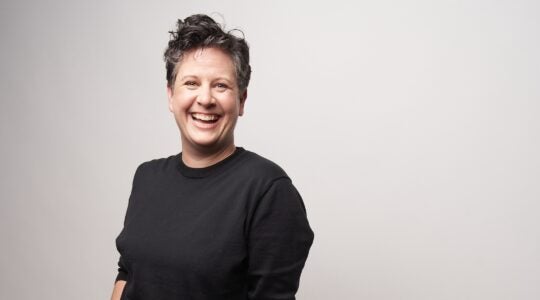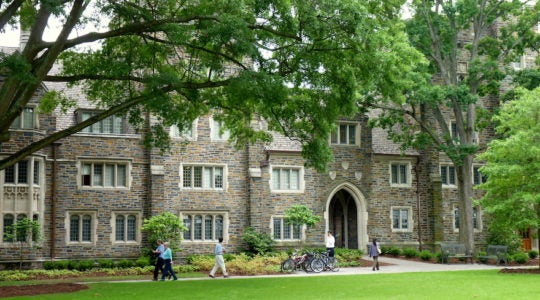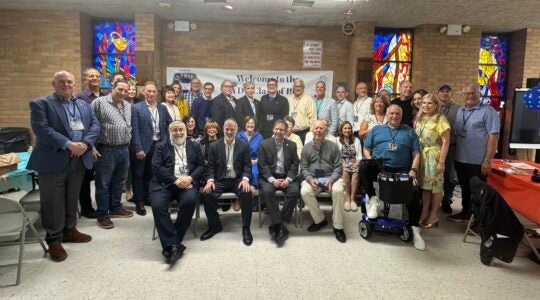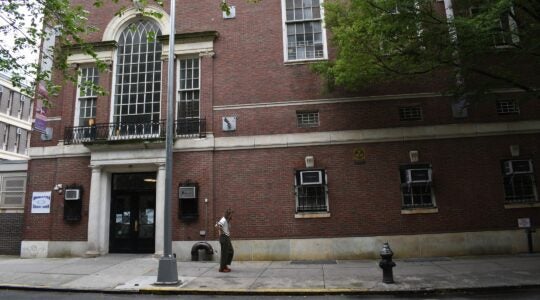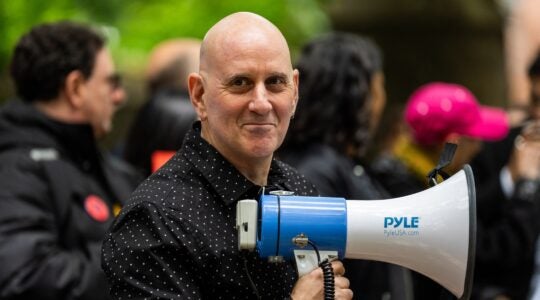It is estimated that there are 4.2 million closed-circuit TV surveillance cameras operating in Great Britain, one for every 15 residents of the country. Don’t worry, though: the United States is rushing to catch up. Baltimore, for example, already has 400 such cameras in place and, as filmmaker Adam Rifkin notes, “Mayors Bloomberg and Daley [of Chicago] and Villaraigosa [of Los Angeles] all want to put in more cameras.”
Rifkin knows a bit more about this subject than your average Hollywood director. His new film, “Look,” which opens on Dec. 14, is filmed from the point of view of surveillance cameras, his contribution to a national dialogue on security and privacy that hasn’t been out of the headlines since Sept. 11, 2001.
“Look, we had plenty of security cameras before, but 9/11 really opened the door for this obsession,” says Rifkin, 41.
“The vast majority of Americans are in favor of these cameras,” he says. “They would argue that it keeps the world safe, and that’s very true. But who should have access to the footage shot, what kind of safeguards are in place to protect individual privacy? It’s such a gray area. And I didn’t want to make a film that takes a stand for either side. … I wanted to make a film that would have people saying, ‘Let’s talk about this.’”
“Look” is an intriguing variant on the now common American indie trope of the multi-story tapestry film that interweaves numerous characters, intermittently allowing their paths — and plots — to cross. Rifkin begins with a pair of sex-obsessed teenage girls in a department store dressing room, quickly introduces one of their teachers and his very pregnant wife as well as a manager at the store who beds every female employee in one of the backrooms, a nerdy insurance guy tormented by bullies in his office, a couple of deranged spree killers and a pair of slackers at a convenience store.
What sets the film apart from the dozens of similarly variegated indies of this ilk is that almost every shot in the film comes from the perspective of one of those ubiquitous CCTV cameras. Which made for some interesting challenges for Rifkin.
“It has been estimated that the average American citizen is now filmed or videotaped 200 times a day,” he says. “That’s a lot of coverage. Heck, that’s more than I’ve shot in all my feature films combined.” And he’s directed 14 feature films since his debut with “Never on Tuesday” in 1988.
“I thought it would be easy to shoot, but that didn’t turn out to be the case,” he says. “We wanted the camera angles to be absolutely authentic, so we brought in a security consultant who would tell us, ‘The camera would be placed here and it would be directed over here, and the other one would be there at such-and-such angle,’ and so on. Once the cameras were placed, it was both freeing and frustrating at the same time. I couldn’t do a close-up or a tracking shot and that made me very nervous, because the film is a character drama.”
When he started looking at the dailies, though, Rifkin realized that he had something very unusual “because it was so objective,” he says. “Everything is from the camera’s point of view, not a character’s. And that creates a voyeuristic mood that forces the audience to be a participant, to say to themselves, ‘I’m a peeping Tom.’ It feels a little shameful, and that is very exciting to explore.”
Of course, Alfred Hitchcock could have told Rifkin that. In a sense, that’s exactly what happened.
“I’m a huge Hitchcock fan,” Rifkin says, leaning forward eagerly. “I looked at ‘Rear Window’ several times. I don’t pretend to be a ‘student’ of Hitchcock, but I love his ability to create suspense and I hope there are moments in this film that work that way.”
Yet if you look at Rifkin’s filmography, it seems a lot longer on mirth than mayhem. This is, after all, the guy who made the bizarre, geeky comedy “The Dark Backwards” about the world’s worst stand-up comic, who grows a third arm from his back, and the dryly humorous “A Night at the Golden Eagle.” And his next film is the caveman comedy “Homo Erectus” in which he plays “a very Jewish caveman, very Woody Allen,” as Rifkin puts it.
“My whole life I’ve been exposed to Jewish culture and the humor of the culture is what has always attracted me,” he says. “My parents are Jewish, my grandparents are all Jewish. My grandfather ran Zayde’s Deli in Chicago — that’s about as Jewish as it gets!”
His own sense of urban Jewish American identity, he readily acknowledges, owes a lot to Woody Allen, but if the trailer for “Homo Erectus” is any indication, there’s a strong element of the Three Stooges (who were also Jewish) in his comedy.
There is also a carefully hidden tribute to Bill Gaines, the creator of Mad Magazine, another post-World War II touchstone of Jewish humor that cast its spell on Rifkin early.
“When I was 9, we were going to take a trip to New York, so I wrote to William Gaines and told him how much I loved Mad, and he invited me to come up to the offices,” Rifkin recalls fondly. “He gave my mom and me a guided tour of the whole place; we met the cartoonists and writers and everything. He was so gracious and friendly.”
So with all those quirky, wacky role models, is it any wonder that Rifkin says, “If there’s a theme in my films, I guess it’s that they always center on a downtrodden Sad Sack character who is basically a decent guy. I think that guy is a representative of Jewish culture.”
“Look” opens Friday, Dec. 14 at the Angelika Film Center (18 W. Houston) and the Lincoln Plaza Cinema (Broadway and 63rd Street).
The New York Jewish Week brings you the stories behind the headlines, keeping you connected to Jewish life in New York. Help sustain the reporting you trust by donating today.
